Growing cacti and succulents have become very popular due to how little they require to thrive. These beautiful plants produce vibrant flowers, needles or thorns, fruit, and sometimes leaves. There are also many different types of cactus available. Currently, there are over 2,000 species of cactus found across the globe. Cacti prefer hot dry climates but can also be very resilient in low temperatures.
Cacti can vary greatly in size depending on the species. Some can grow to a height of 40 feet while others stay closer to the ground growing a maximum of 6 inches. With such a large variety in appearance, there’s no wonder why they’re such beloved houseplants. Whether you’re looking for a new addition to your home or just learning about these interesting plants, this article will help you discover 15 different types of cactus.
1. Prickly Pear Cactus
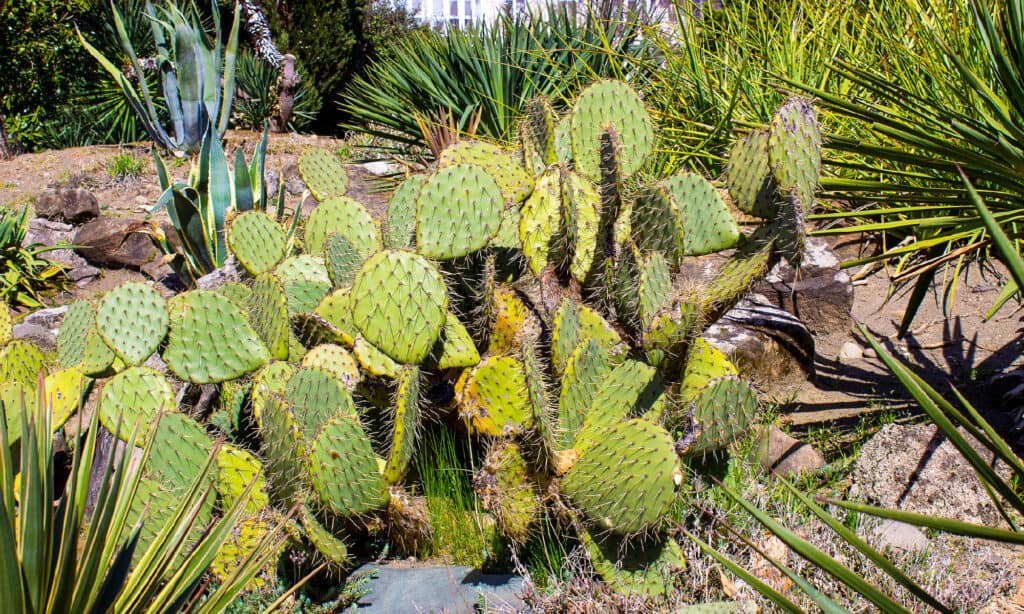
Large prickly pear cactus plants grow sweet fruits that are sometimes made into jellies and candies.
©iStock.com/Marina Krisenko
The Prickly Pear Cactus, also known as nopal, refers to any flat-stemmed spiny cacti that grows edible fruit. They are native to the Western Hemisphere and cultivated for their fruit and edible paddles. Two of the most commonly known species of prickly pear cactus are the Engelmann prickly pear and the Beavertail cactus.
2. Saguaro Cactus

Large saguaro cactus in the Saguaro National Park in Arizona.
©high fliers/Shutterstock.com
One of the most iconic types of cactus plants is the the saguaro cactus, a tall tree-like cactus that is endemic to the Sonoran Desert. It can reach up to 40 feet in height and can live for more than 150 years. The saguaro grows branches, also called arms, that bear red fruits. It can take up to 75 years for a saguaro to grow its first arm, while others don’t grow any arms. People of many cultures have used these cacti as a food source for thousands of years.
3. Barrel Cactus

The Barrel Cactus has a lifespan of 50 to 100 years.
©iStock.com/Farknot_Architect
The barrel cactus is a small round cactus that does not grow very tall but can get very wide. They typically grow to around 3 feet tall but in some regions can grow to almost 10 feet tall. These cacti can live for over 100 years and once they reach maturity they will bloom annually. The color of the spines covering the cactus can range from pale yellow to orange-red and the flower that blooms yearly is typically either purple, red, yellow, or orange.
4. Christmas Cactus
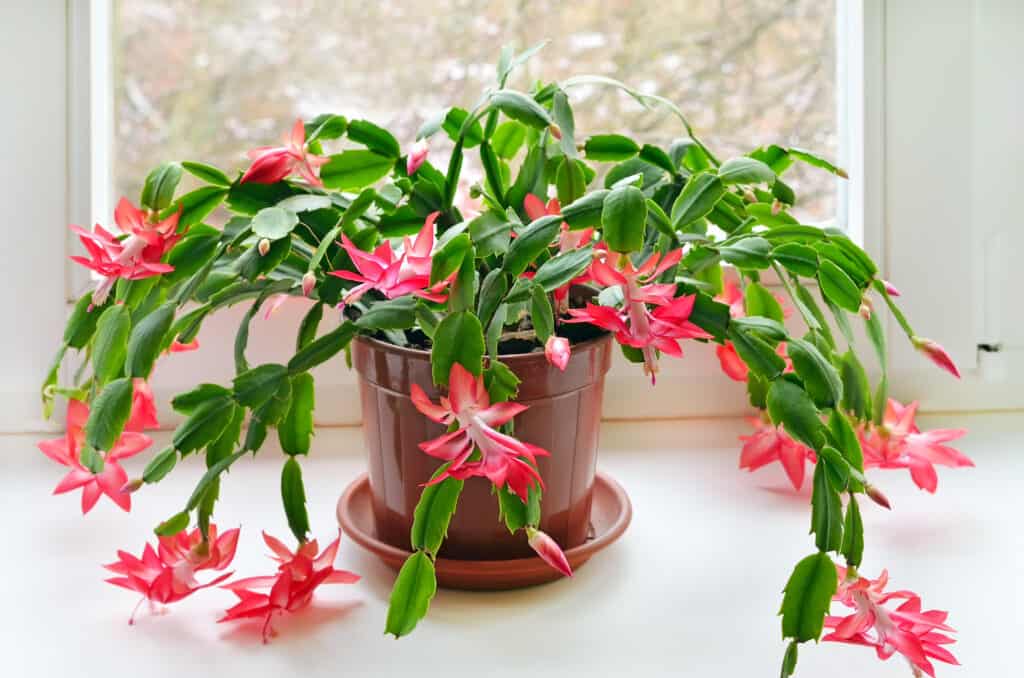
The flowers of the Christmas cactus are brightly colored and can bloom multiple times a year.
©iStock.com/Nadezhda_Nesterova
The Schlumbergera cactus, commonly known as the Christmas cactus or Flor de Maio (“flower of May”), is a type of small cactus that is most commonly found in the coastal mountains of southeastern Brazil. Its name refers to its flowering season which in the Northern Hemisphere is November to January, while in the Southern Hemisphere it flowers in May. This shrub-like cactus can grow to a height of 4 feet and grows long, leafless stems with flowers of varying colors at the end.
5. Fairy Castle Cactus
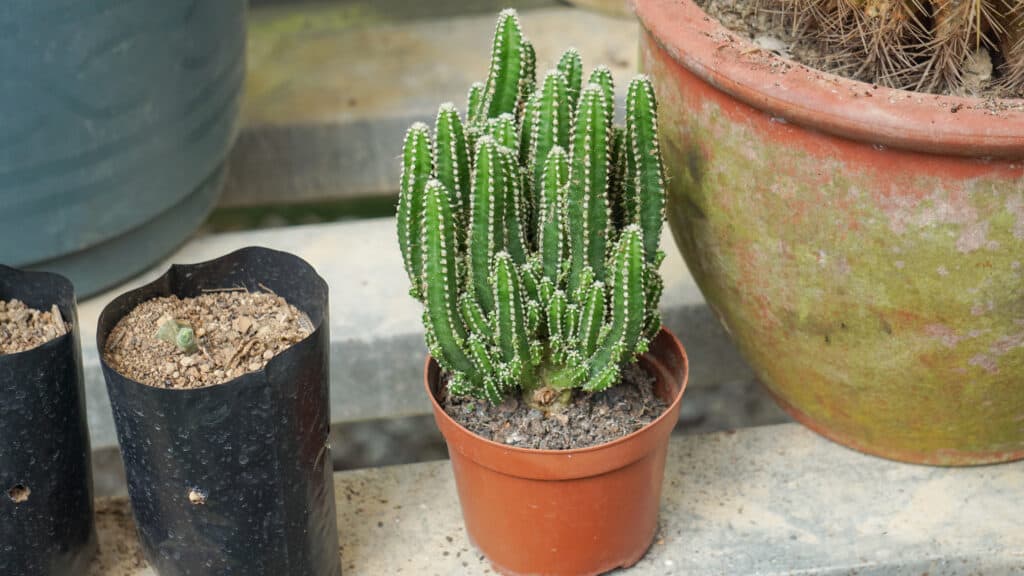
The Fairy Castle Cactus is native to North, Central, and South America.
©iStock.com/Thommy Ting
The fairy castle cactus is commonly kept as a houseplant due to its small size. These cacti can reach a maximum height of 6 feet, but they are very slow-growing plants so it takes a while to reach full maturity. No flowers bloom from this plant but it does have lots of curved branches that many say resemble the turrets of castles.
6. Star Cactus
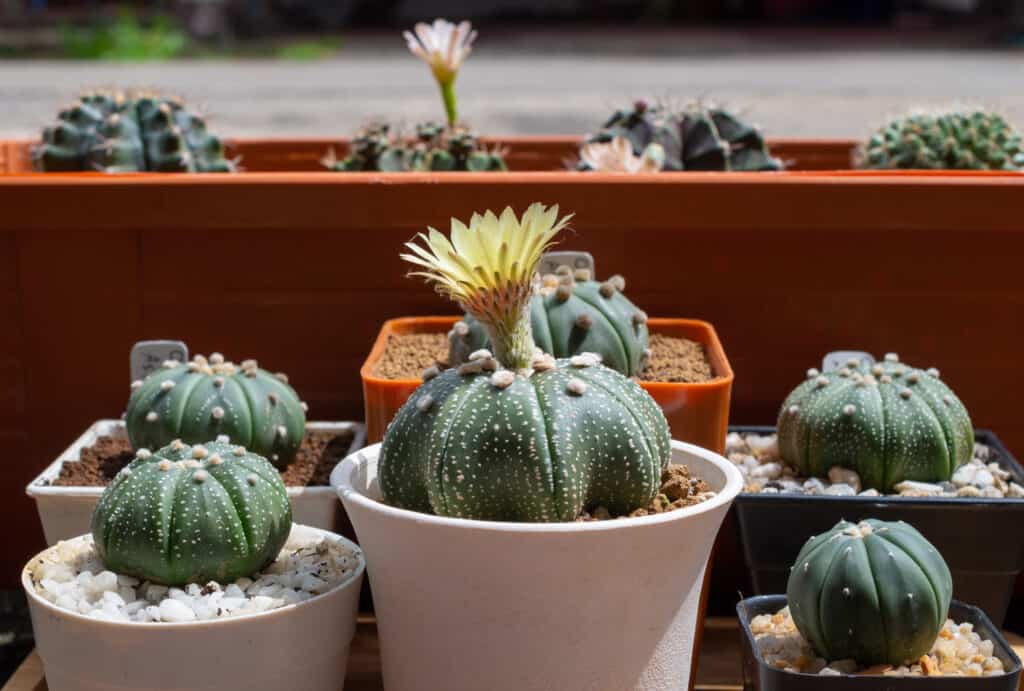
The star cactus is a vulnerable plant species that gets its name from its unique shape.
©iStock.com/Boyloso
The star cactus is also known as the sea urchin cactus or starfish cactus because of its shape. They have been most commonly grown as houseplants since the 1840s. These cacti only grow to about 2-3 inches in height making them perfect indoor houseplants.
Yellow flowers almost the same size as the cactus itself grow from the top of it. These flowers grow from March to June and small pink oval fruits are produced from April to June. Currently, the star cactus is listed as endangered by the United States Fish and Wildlife Service and critically imperiled by the Nature Conservancy.
7. Old Lady Cactus
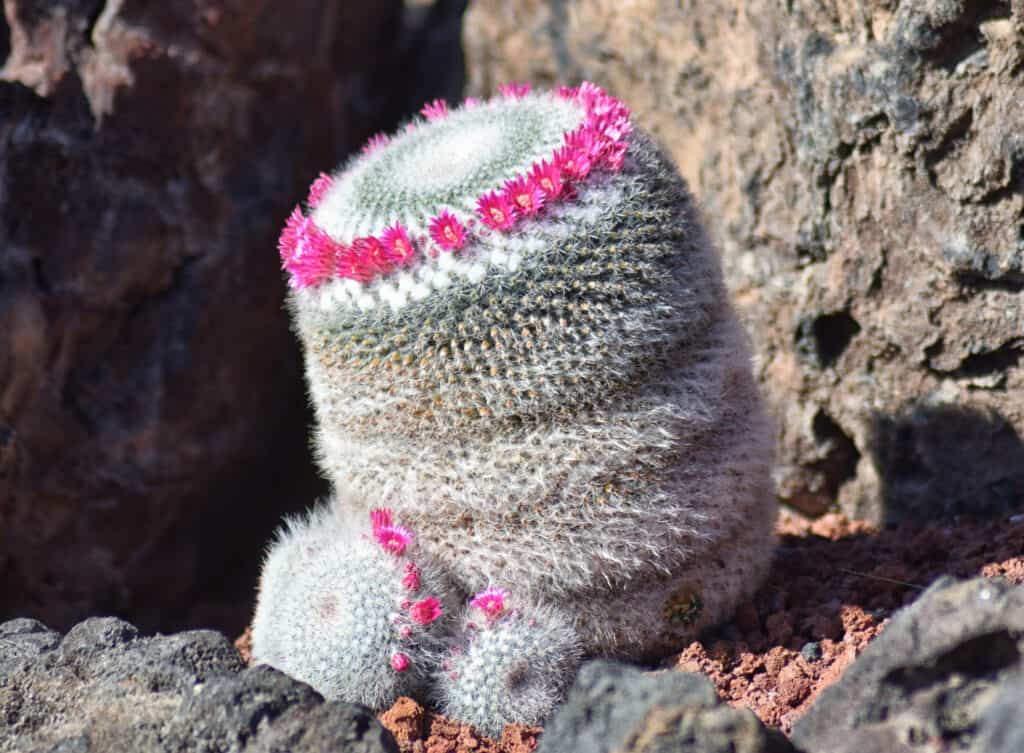
Old Lady Pincushion cactus, or Old Lady cactus, gets its name from the white fuzzy hair-like spines covering it.
©iStock.com/Ian Lycett-King
Native to central Mexico is the Mammillaria hahniana, also known as the old lady cactus. This cactus grows to about 10 inches tall and 20 inches wide. It is covered in long white spines which is where the name ‘old lady’ came from. Small purple flowers grow around the top of the plant from spring to summer. This cactus makes a great house plant and is recommended for beginners because of how little it needs to be watered.
8. Moon Cactus
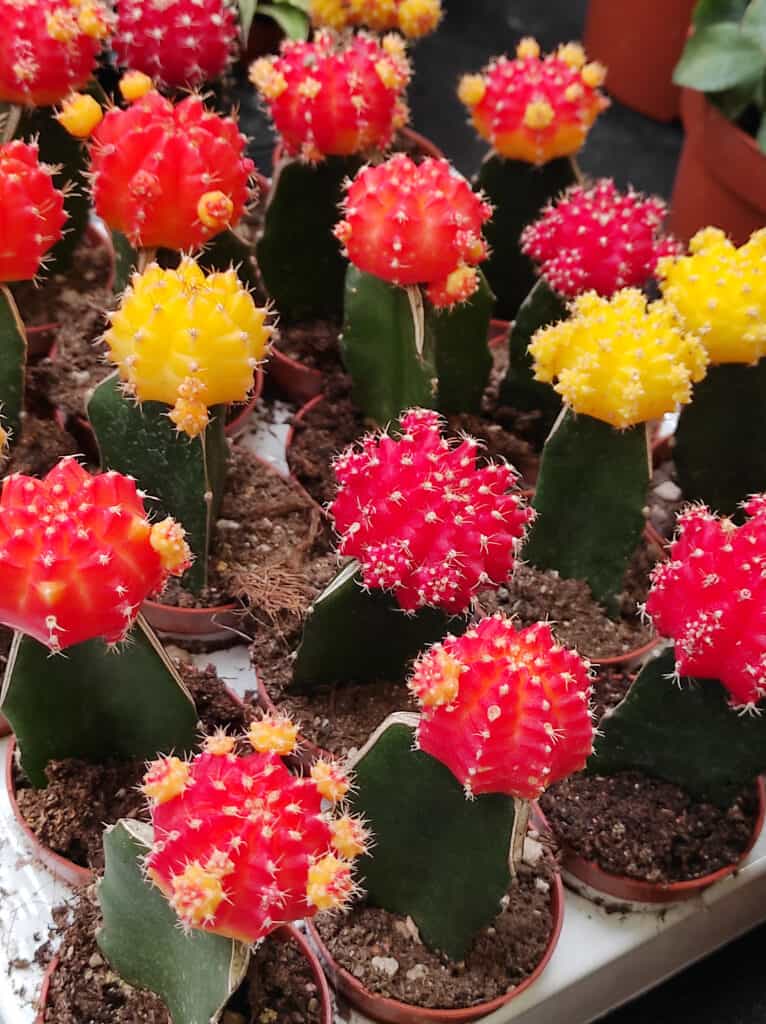
A moon cactus is the product of two different plants grafted together. It only lives for a few years, since the base plant grows faster than the graft.
©iStock.com/Liudmyla Liudmyla
A moon cactus is a mutant strain of the Gymnocalycium mihanovichii. The most popular cultivars are mutants that completely lack chlorophyll which helps expose the red, yellow, or orange pigmentation in the cactus. These cacti are typically grown as houseplants due to their small size. The moon cactus doesn’t usually grow larger than 10-12 inches tall.
9. Gold Lace Cactus
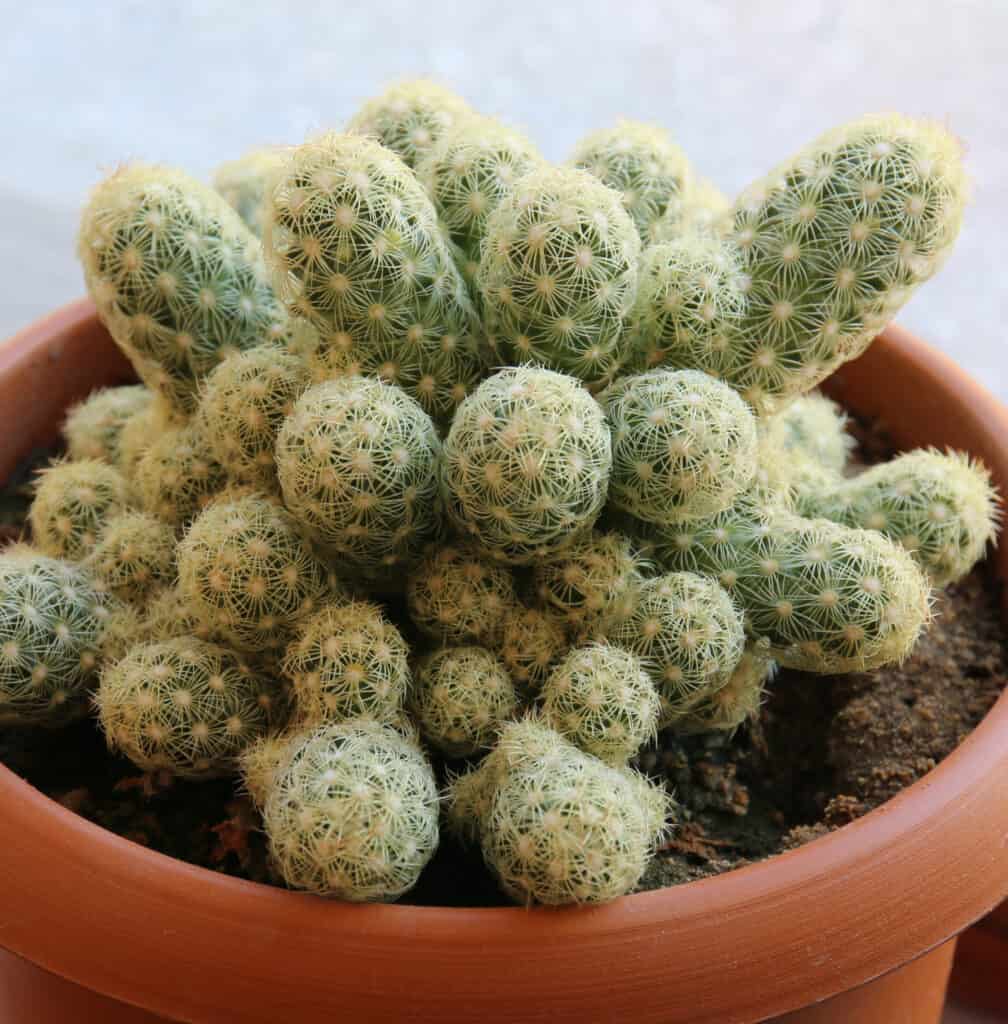
Growing in dense clusters, the gold lace cactus has a gold or brownish hue.
©iStock.com/Yetkin BILGIN
The gold lace cactus is also known as the lady finger cactus because of its five tube-shaped stems. These cacti are covered in long yellow or brown spines that can be very sharp. In spring they produce white, yellow, and sometimes reddish-purple flowers on the upper parts of the stems. They are native to Mexico though they make good houseplants anywhere if they are given enough light.
10. The Old Man Cactus
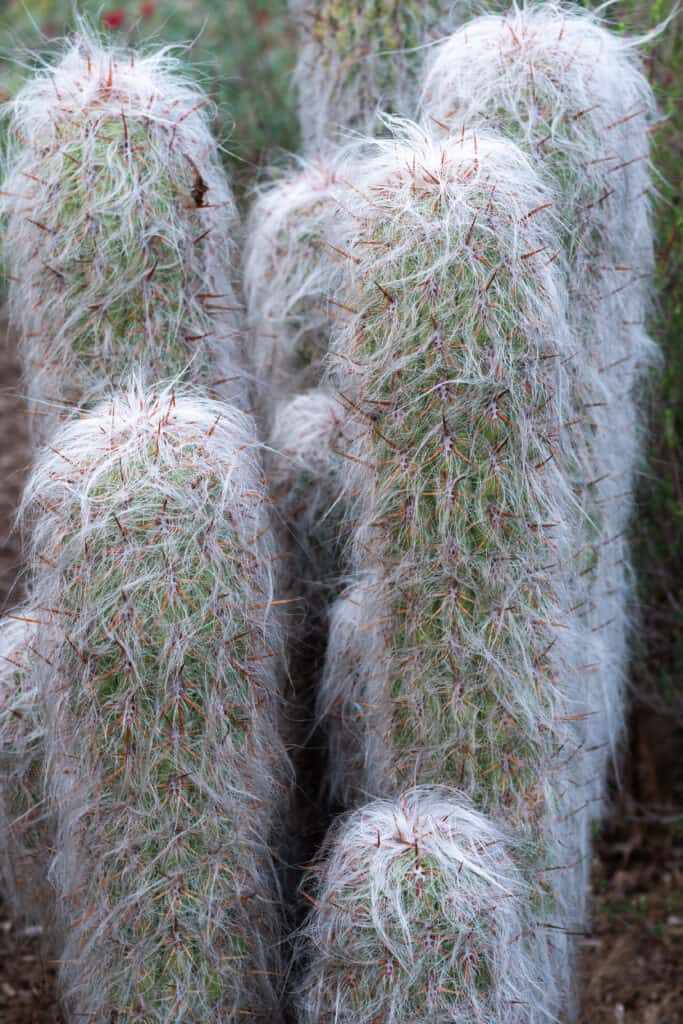
In the right conditions an Old Man Cactus can live for up to 200 years.
©iStock.com/Taylor Kos
Also known as the bunny cactus, the old man cactus gets its name from the long white hairs that cover the entire stem. Underneath this coat of white hairs hides small yellow thorns that are quite sharp. This type of cactus is very slow growing and can take between 10 to 20 years to bloom. When it does bloom, it shows off its hard work with beautiful red, white, or yellow flowers that only fully bloom at night.
11. Hedgehog Cactus
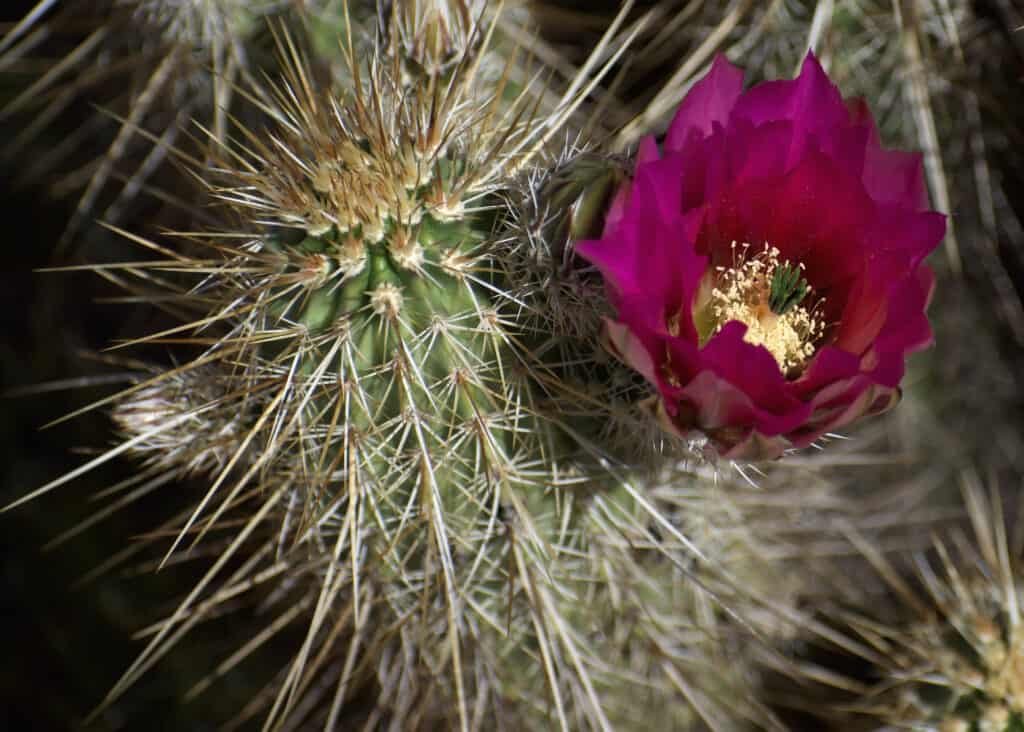
The spines of a
Hedgehog
Cactus resemble those of a hedgehog.
©iStock.com/LAP
The hedgehog cactus is small and grows very close to the ground. It can produce over 20 stems and grows large vibrant flowers. These flowers are most commonly red and yellow in color. The plant gets its name from the spines covering its fruit, which look similar to a hedgehog. Some species of the hedgehog cactus are also referred to as pincushion cacti.
12. Beehive Cactus
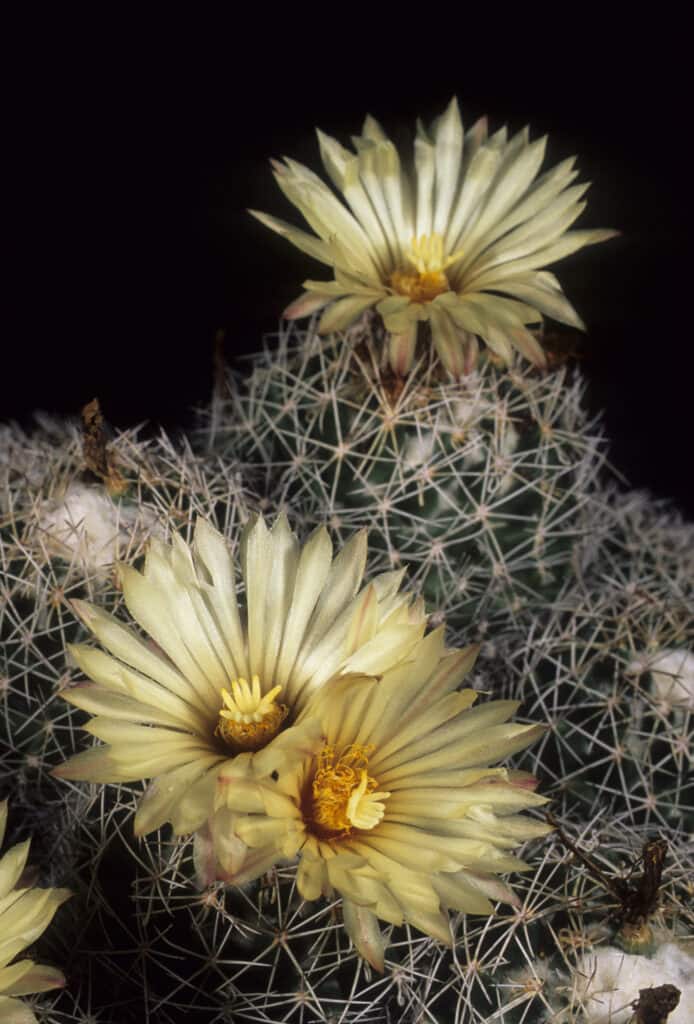
The Beehive Cactus is a very common houseplant because although it requires a lot of sun, it does not need much water.
©iStock.com/Michel VIARD
Native to North America and central Mexico the beehive cactus has almost 60 species and 20 subspecies making it one of the largest Genera of cactus. These cacti can grow between 6 to 24 inches depending on the species. Their bodies are covered in round nodules and each nodule contains 10 to 15 spines. The flower this plant grows is very large for its size and is found in shades of lavender, purple, pink, orange, white, and yellow. It produces edible berries that are normally red or yellow.
13. African Milk Tree Cactus

The African Milk Tree Cactus can grow up to 9 feet tall.
©iStock.com/Olesya22
Commonly used as houseplants, the African milk tree cactus is a perennial that originates from Central Africa. The African milk tree cactus is a tall stem that grows branches that grow upwards, similar to the saguaro cactus. There are three distinctive edges on this plant that grow leaves and thorns. When grown outdoors this plant may bloom with small white or yellow flowers. If broken or cut the African milk tree cactus exudes a white sap that is toxic and can cause skin and eye irritation.
15. Queen of the Night Cactus
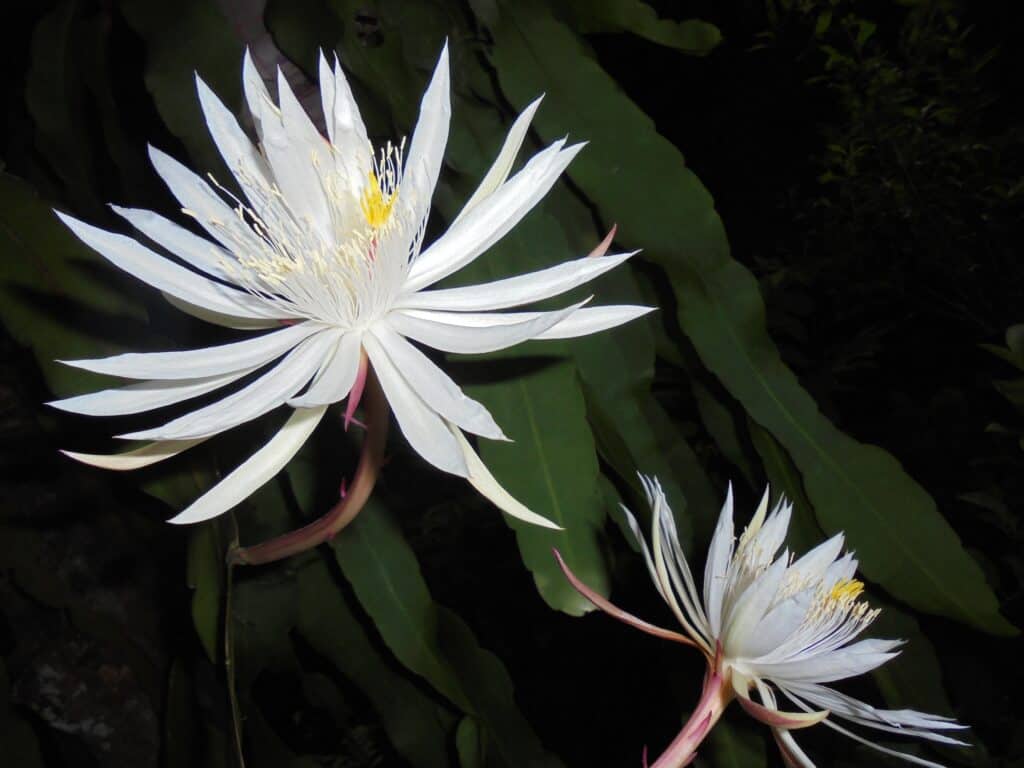
Native to South America, the Queen of the Night Cactus has sweet smelling white flowers that bloom for only one night.
©iStock.com/Aloysius Gonzaga Sutrisno
The queen of the night cactus, or princess of the night cactus, gets its name from its large white flowers. These rarely bloom, and when they do, they only bloom at night. Once the flower blooms, it wilts before dawn. Unlike the other different types of cacti on this list, the queen of the night cactus usually grows as large trees and has many vine-like branches with leaves. The fruit it produces is about 4 inches long, purplish-red, and edible.
Up Next?
- Discover the Largest Cactus In The World
- Are Succulents Poisonous To Dogs or Cats?
- The 15 Largest Deserts in the World
- The 10 Most Amazing Desert Animals
The photo featured at the top of this post is © Nate Hovee/Shutterstock.com
Thank you for reading! Have some feedback for us? Contact the AZ Animals editorial team.






